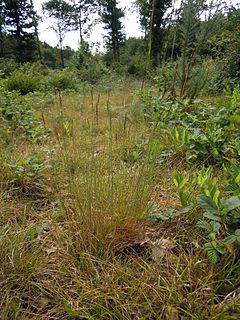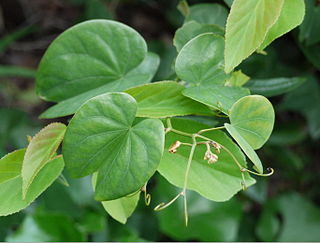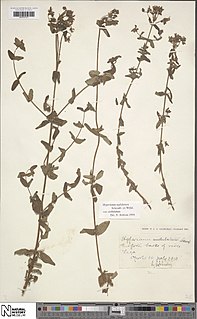Melica longiflora is a grass species in the family Poaceae that is endemic to Chile where it can be found from Coquimbo to Talca.
Melica bonariensis is a species of grass endemic to Argentina where it can be found in such provinces as Buenos Aires, La Pampa, and Rio Negro.
Melica tenuis, is a species of grass that can be found in Brazil, Paraguay, Uruguay and Argentinian provinces such as Misioines and Entre Rios.
Melica secunda, is a species of grass that can be found in China, Afghanistan, and Kashmir, Pakistan.
Melica eremophila is a species of grass that is native to South America.
Melica paulsenii is a species of grass endemic to Chile where it grows along the coastal cordillera at 50–700 metres (160–2,300 ft) above sea level.
Melica mollis is a species of grass endemic to Chile where it grows in rock crevices at 340 metres (1,120 ft) above sea level.
Melica rigida is a species of grass found in Argentina, Brazil, and Uruguay.
Melica patagonica is a species of grass that is endemic to South America.
Melica parodiana is a species of grass found in Buenos Aires, Argentina and Uruguay.
Melica radula is a species of grass endemic to China. It grows on grassy mountain slopes and larch forests at 300–1,200 metres (980–3,940 ft) above sea level.
Calamagrostis varia is a species of flowering plant from the family Poaceae which is native to Europe.

Agrostis vinealis is a species of grass known by the common names brown bentgrass and brown bent, which can be found from Russia to Mongolia, into China and even Pakistan, and India. It was introduced to Greenland and Alaska.
Agrostis tolucensis is a species of grass which is found in South America, the United States, and Mexico.

Lycium ruthenicum, is a flowering plant commonly known as Russian box thorn in the West. is a species of flowering plant in the nightshade family which can be found in Central Asia, southern part of Russia, throughout Northwest China, and Pakistan. Also commonly known as black fruit wolfberry, goji nero, siyah goji, kaokee, თეთრეკალა, “next to Mary”, is a species of flowering plant in the nightshade family which can be found in Central Asia, southern part of Russia, throughout Northwest China, and Pakistan.

Bauhinia japonica is a species of flowering plant in the family Fabaceae which can be found in Guangdong, Hainan and Japan.

Festuca dolichophylla is a species of grass which is endemic to western South America with an occurrence in Costa Rica.
Hypericum cuisinii is a perennial herb in the genus Hypericum, in the section Adenosepalum. The herb has pale yellow flowers and occurs in Greece and Turkey.

Hypericum undulatum, the wavy St Johns Wort, is a perennial herb native to western Europe and northern Africa. The specific name undulatum is Latin, meaning "wavy" or "undulated", referring, just as the common name, to the wavy leaf margins of the herb. The plant has a diploid number of 16 or 32.

Hypericum majus, the greater Canadian St. John's wort, is a perennial herb native to North America. The specific epithet majus means "larger". The plant has a diploid number of 16.






